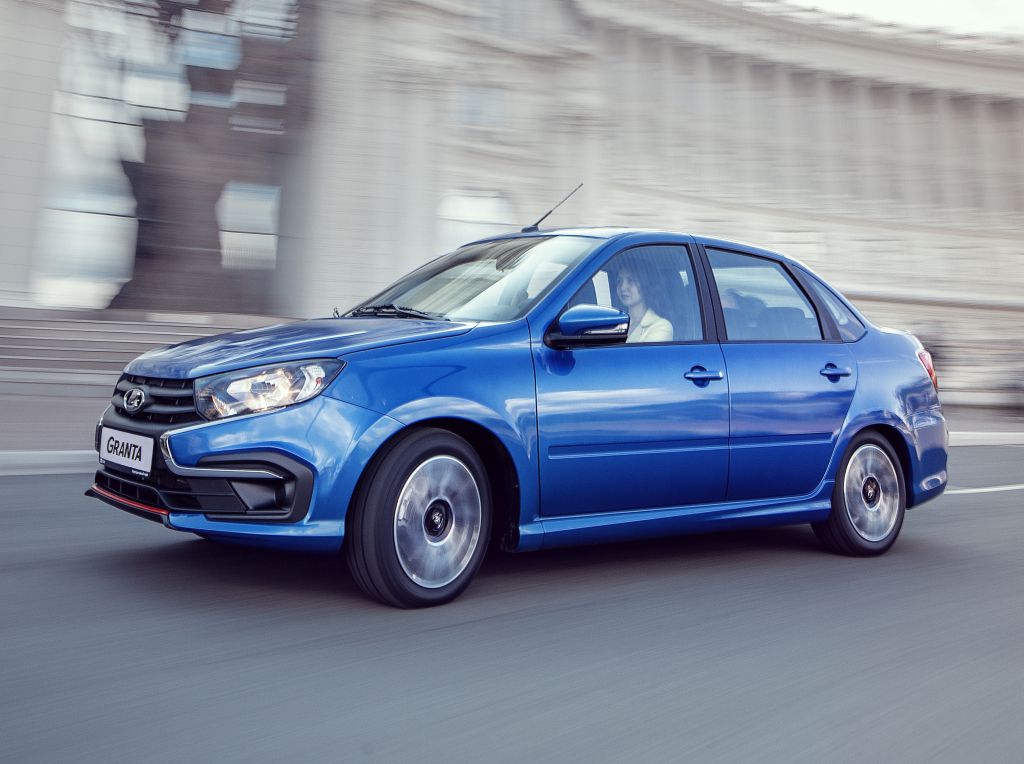It took the Russian carmaker three months to figure out a way to make cars without parts from the West. The recipe is ingeniously simple: If we don’t have parts, we don’t put them there.
The first Monday in June is a day that all employees of the Russian car manufacturer VAZ in Togliatti have been waiting for. After unplanned production outages, the Grant model in the “simplified version” is to start coming off the production lines. This nickname is used in Russia to describe cars that lack virtually everything modern.
According to information sheet The planned Lada will not meet the Euro 5 environmental standard, which until recently applied in Russia. It will also lack airbags, anti-lock braking system ABS and stabilization of the ESP chassis. While the basic version of the Vest will be deprived of basic comfort equipment, at least an electrically operated windows and power steering will be available at an additional cost.
Lada is also a bit cheaper at the same time, the sale price is expected to start at 600,000 rubles (approximately 220,000 crowns), while Granta is currently on offer for 727,900 rubles (265,000 crowns).
The Russian daily quotes the words of the vice-president of the National Automobile Union, Anton Sharapin, who is concerned that the absence of ABS in new cars will increase the accident rate on Russian roads. According to the letter, Oleg Šatov, director of the Kazakh School of Advanced Driving Skills, agrees: According to him, a whole generation of motorists has no idea how a car behaves without ABS and other electronic systems on the road.
The production of “simplified versions” of cars was recently sanctioned by the Russian government in response to a boycott of supplies of car parts from the EU. Among other things, the government document has softened the requirements for crash tests, and manufacturers can also choose the ecological standard of exhaust gases their cars will meet. In theory, this could be the Euro 0 standard, which was banned in Europe in 1992.
Clever Russian heads
AvtoVAZ acquired a new director at the end of May former minister transport Maxim Sokolov. The career officer elected by the board of directors had to get used to having someone speak to him in the management of the company. The head of the Ministry of Industry and Trade Denis Manturov immediately tasked him with the production of “new products” that will be built “on Russian platforms” using the knowledge of “Russian engineers”, all “with the maximum involvement of Russian suppliers”.
Let us remind you that the entire production of AvtoVAZ has so far been closely linked with the Renault brand. And this year in Togliatti, preparations for the arrival of the modern CMF-B group platform, which was to improve the driving characteristics of the manufactured models, were finishing.
However, this option has now fallen and VAZ has basically only two options: It will either find a new partner among the Chinese carmakers, or it will continue to produce Grant and Niva models on its own platform. No one in Russia but politicians can believe that the carmaker, with the help of “Russian engineers”, would be able to develop its own platform.
Catch up and overtake
Denis Manturov also has big plans for the former Moscow Renault factory, where they are said to be preparing to resume Moskvich production. But everything is shrouded in a special information fog, so no one knows exactly what the new Moskvich should look like and what it should ride. The news that it could be an electric car looks the most logical. This could easily be created in cooperation with one of the Chinese producers, who, however, do not currently rush to warring Russia.
“Every Russian wants to have his Moskvich,” contributed to the debate about the future of the brand Kremlin spokesman Dmitry Peskov. “But it must be a good car,” he mused. “If it succeeds and Moskvich will be chic enough, then of course everyone will want such a car, including the president,” he said when asked if he would buy Moskvich himself or even Vladimir Putin. According to official data, the latter has only products of Soviet origin in his garage: two Volga GAZ-21, one Ladu Niva and a Skif tent.
The plans of the Russian automotive industry, lacking a real basis, date back to the times of the Soviet Union. For example, in 1982, when GAZ came up with the modernized Volga 3102, the manufacturer made a commitment to catch up with Mercedes-Benz in five years. And during the next five years, he even had to overcome it – both in terms of model offerings and production quality.
Olga Nikitinová aptly evaluated the whole situation around dreaming about new models in the comment Russian magazine Kommersant, called Kolos on wooden wheels: “Given the experience of previous Russian attempts to produce domestic wonders of technology, I doubt that all these actions will materialize in a finished car, which will be in demand.”
–


